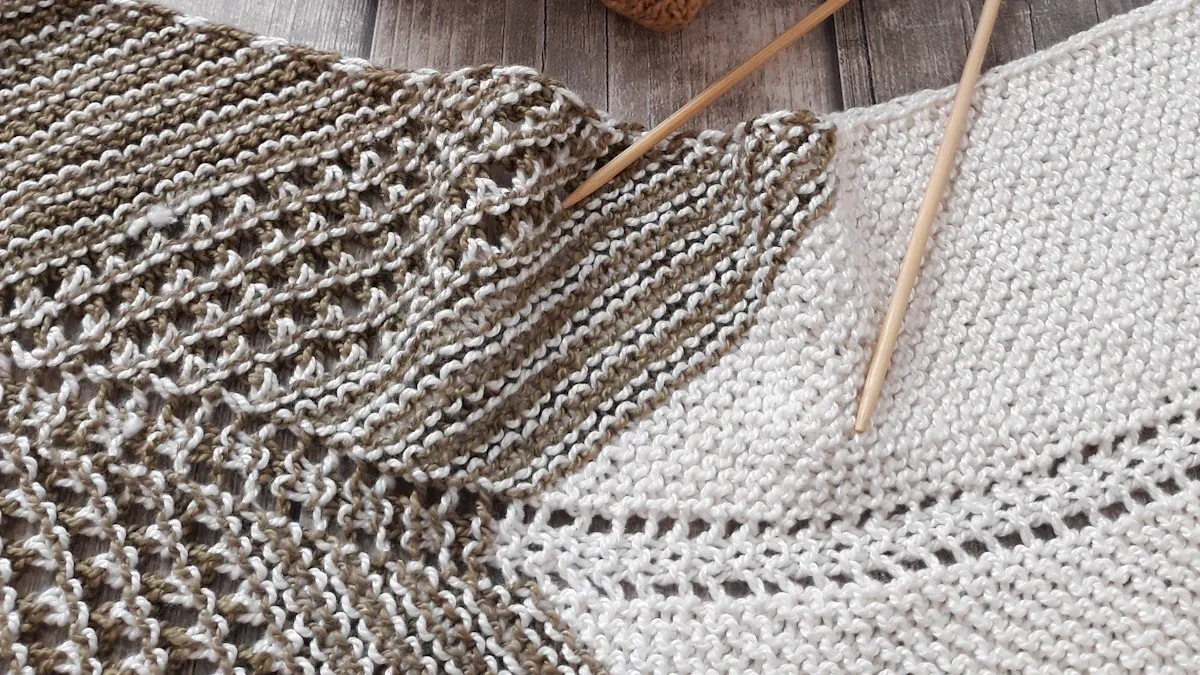
Linen yarn options are important for eco-friendly knitwear making. 🌱 Many people now prefer natural materials for their projects. Linen comes from the flax plant and is strong, breathable, and useful. More people want products that are good for the planet and high-quality. The yarn market may grow to $100.1 billion by 2025 because of this. Knowing about linen yarn options helps you make great, lasting clothes while helping the environment. 🌍
Key Takeaways
Linen yarn is tough and good for the environment. It’s great for eco-friendly clothes.
Think about how linen feels and its weight for your project. Thin linen blends are perfect for summer outfits.
Washing linen yarn makes it softer and comfier over time. It stays strong even after many washes.
Combining linen with other materials makes it softer and less wrinkly. This also makes it easier to use.
Take care of linen by washing gently and shaping it. This keeps it looking nice and lasting longer.
What Is Linen Yarn?
Origins and Production Process
Linen yarn has been used for thousands of years. People started using flax fibers about 36,000 years ago. Flax yarn and fabric were found in Swiss lake homes from 8000 BC. In Ancient Egypt, linen was very important. It stood for purity and light. Egyptians used it for clothes, mummy wraps, and trading. This shows how valuable linen has been in history.
Linen yarn comes from the flax plant. Flax grows best in cool places like Europe. France, Belgium, and the Netherlands are famous for growing great flax. After harvesting, the fibers are separated from the woody parts. This step is called retting. Then, the fibers are spun into yarn, which is strong and useful.
Region | Key Features |
|---|---|
Europe | Top flax-growing area; France, Belgium, and the Netherlands lead production. |
Asia Pacific | Fast growth due to factories and higher incomes; big markets in China and India. |
North America | More interest in eco-friendly fabrics; home to top fashion brands and new manufacturing methods. |
Key Characteristics of Linen Fiber
Linen yarn has special qualities that make it great for knitting. It is 30% stronger than cotton, so it lasts longer. It pulls moisture away from the skin and dries fast, perfect for summer clothes. Linen also fights bacteria, stopping bad smells and being gentle on skin. Washing linen makes it softer over time but keeps it strong.
Property | Details |
|---|---|
Origin | Made from flax, a plant-based fiber. |
Strength | 30% stronger than cotton, very durable. |
Moisture-wicking | Pulls sweat away, great for hot weather. |
Quick-drying | Dries fast, keeping you comfy in heat. |
Antibacterial | Stops bacteria that cause odors, good for sensitive skin. |
Softens with washing | Gets softer with each wash, staying comfy and strong. |
These features make linen yarn a smart and eco-friendly choice. Its strength and flexibility let you create stylish, lasting clothes.
Properties of Linen Yarn
Advantages of Linen Yarn
Linen yarn has many benefits that make it popular. Its special features provide both strength and comfort, making it useful for different projects.
Durability: Linen yarn is very strong and lasts a long time. It’s great for clothes that are used often.
Breathability: Linen is light and airy, keeping you cool in heat. It’s ideal for summer outfits and close-to-skin wear.
Softens Over Time: Linen gets softer every time you wash it. This makes your clothes feel better the more you wear them.
Eco-Friendly: Linen breaks down naturally when thrown away. Choosing it helps protect the environment.
Moisture-Wicking: Linen soaks up sweat and dries fast. This keeps you dry even in sticky weather.
Antibacterial Properties: Linen stops bacteria, cutting down on smells. It’s also gentle for sensitive skin.
Tip: Want a yarn that’s strong, comfy, and eco-friendly? Linen yarn is a great pick for your knitting projects.
Disadvantages of Linen Yarn
Even with its benefits, linen yarn has some downsides. Knowing these can help you decide if it’s right for your project.
Stiffness: Linen can feel hard to work with at first. It’s not as soft as other yarns right away.
Limited Stretch: Linen doesn’t stretch much, which can affect how clothes fit.
Wrinkling: Linen wrinkles easily, so it may not look smooth.
Cost: Good linen yarn can cost more than other types. But its long-lasting quality can make it worth the price.
Shrinkage: Linen clothes might shrink a little after washing. Take care to keep their size and shape.
Blending Confusion: Picking between pure linen and blends can be tricky. Blends may add softness or stretch but lose some of linen’s natural perks.
Note: To fix these issues, try mixing linen with other fibers or use special knitting tricks to improve its performance.
Types of Linen Yarn
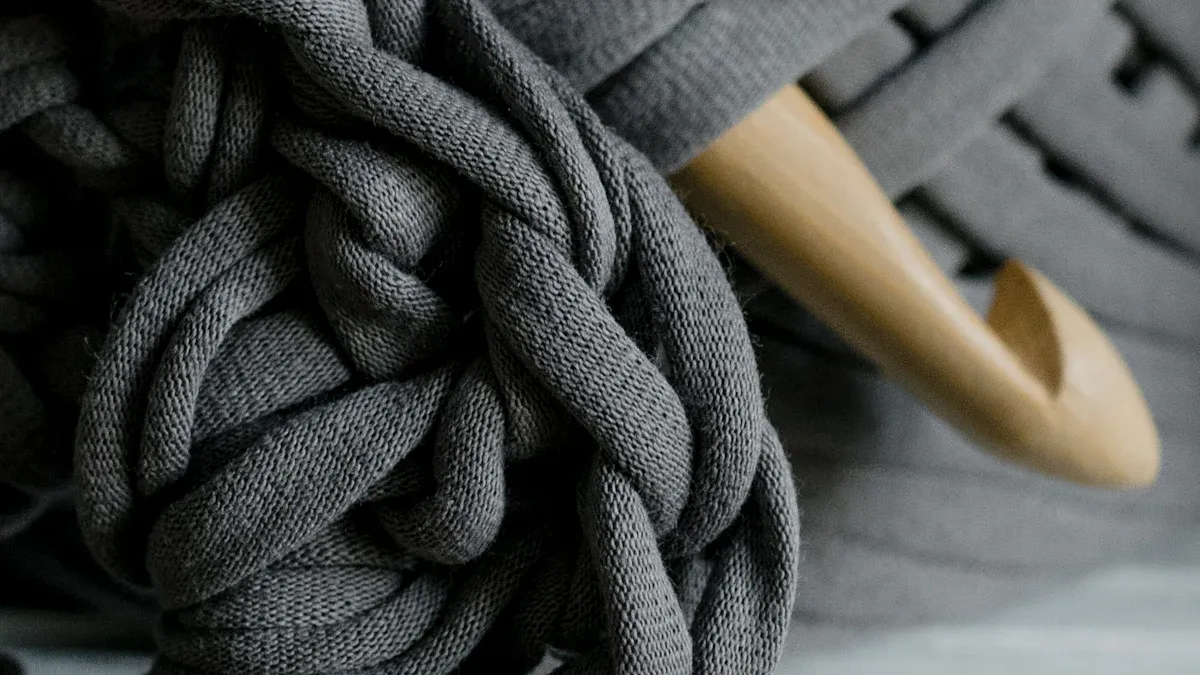
Choosing the right linen yarn is important for knitting projects. Different types of yarn have unique features. These features help you pick the best one for your needs. Whether you want light summer clothes or strong accessories, there’s a type for you.
100% Linen Yarn
Pure linen yarn is made only from flax fibers. It is very strong and breathable. Its rough texture gives it a natural, earthy look. This makes it great for long-lasting projects. It’s perfect for summer clothes because it keeps you cool. It absorbs sweat and dries fast in hot weather.
At first, 100% linen yarn can feel stiff and hard to use. But washing and wearing it softens the fibers over time. This makes it more comfortable without losing strength. If you care about the planet, pure linen yarn is a great choice. It breaks down naturally and is eco-friendly to produce.
Tip: Use 100% linen yarn for strong, natural-looking projects that last long.
Linen Blends
Linen blends mix flax fibers with other materials like cotton or silk. These blends make linen yarn softer and easier to use. For example, mixing linen with cotton adds stretch and comfort. This makes the yarn better for many types of projects.
Advantage | Linen Blends | Pure Linen |
|---|---|---|
Elasticity | More stretch from added fibers | Less stretchy |
Wrinkle Resistance | Wrinkles less due to blending | Wrinkles easily |
Cost-Effectiveness | Costs more | |
Versatility | Works for many projects | Fewer uses |
Softness | Softer with blends | Naturally soft |
Ease of Care | Easier to clean | Needs special care |
Linen-cotton blends are popular for making clothes. They combine linen’s coolness with cotton’s softness. This makes them great for light clothes and accessories. Blended yarns also wrinkle less than pure linen yarn, so they’re easier to care for.
Note: Linen blends are affordable and flexible, making them a smart choice for knitters.
Specialty Linen Yarns
Specialty linen yarns are made for special needs. Hand-spun yarn has a unique texture and handmade feel. Organic linen yarn is made without harmful chemicals, which is better for the environment. Dyed linen yarn comes in bright colors, letting you create fun designs.
These special yarns often cost more because of how they’re made. But their unique features make them worth it for special projects. They add a personal touch and meet specific needs.
Callout: Specialty linen yarns, like organic or hand-spun types, help you make unique and eco-friendly knitwear.
Recent studies show why people choose certain linen yarns. Factors include cost, customer needs, and product quality. Specialty yarns often meet these needs, offering creative solutions for knitwear makers.
Tip: Want something special? Try specialty linen yarns for unique textures, colors, and eco-friendly benefits.
Picking the Best Linen Yarn for Your Project
Things to Think About
Choosing the right linen yarn takes some thought. Each project needs certain features to turn out well.
Texture: Linen yarn feels different, from rough to smooth. For light clothes like summer tops, softer linen or linen-cotton blends are better. These blends feel nice on the skin and stay breathable.
Weight: Yarn weight shows how thick it is. Thin yarn works for summer tops or small items. Thicker yarn is good for jackets or bags. Match the yarn weight to your pattern for the best results.
Durability: Linen is strong, but pure linen can feel stiff at first. Blended yarns, like linen-cotton, are more flexible but still tough. These blends are great for comfy and long-lasting projects.
Eco-Friendliness: If you care about the planet, pure linen is a great pick. It breaks down naturally and uses fewer resources to make. Organic linen is even better for the environment.
Shrinkage: Linen clothes might shrink a bit after washing. Pre-wash your yarn or use cotton blends to avoid this problem.
Tip: Test a small piece before starting. This helps you check the yarn’s feel, thickness, and shrinkage.
Matching Yarn to Knitwear
Different projects need different linen yarns. Picking the right one makes your work look and feel better.
Summer Clothes: Linen yarn is perfect for summer because it keeps you cool. Thin linen yarn makes breathable tops and tank tops. Linen-cotton blends add softness and stretch, great for clothes worn close to the skin.
Accessories: For bags, scarves, or hats, use thicker linen yarn or special blends. These yarns are strong and help your items keep their shape.
Knitting Patterns: Linen yarn works with many patterns. Linen stitch makes thick, textured fabrics for accessories. Smooth stitches like jersey or stockinette are great for summer clothes.
Callout: Linen yarn is light and softens with washing, making it perfect for summer tops and warm-weather clothes.
Why Linen Yarn Is Great for Summer Clothes:
It pulls sweat away, keeping you dry in heat.
It dries fast, so you stay comfy.
Thin yarn feels light and airy.
Good sweat control is key for summer clothes.
Fast drying adds comfort in warm weather.
Seamless knitting makes these features even better.
Note: Linen-cotton blends give you both softness and strength, making them great for clothes and accessories.
Tips for Knitting With Linen Yarn
Getting Linen Yarn Ready
Linen yarn can feel stiff at first. Washing or steaming it before knitting makes it softer. Pre-washing also helps stop shrinkage, so your project stays the right size. This is extra important for linen-cotton blends since cotton reacts differently when washed.
You can also treat linen yarn to change its feel and weight. For example, glycerol can make yarn heavier by 41.14%. Soap treatments only add about 4.43% weight. Wax can make the yarn smoother and easier to knit with. Always test a small piece first to see how the yarn behaves.
Tip: Wind your linen yarn into a ball before starting. This keeps it from tangling and makes knitting easier.
Best Knitting Methods
Linen yarn needs special techniques for great results. Since it doesn’t stretch much, use patterns that focus on structure. The linen stitch makes thick, textured fabrics, perfect for bags or placemats. For clothes, smooth stitches like stockinette are light and breathable, great for summer.
Blends like 80% linen and 20% cotton are great for knitting. This mix makes the yarn stronger and more stable. Finishing your project properly can also make it last longer and feel better. Studies show finishing reduces pilling and improves comfort.
Note: Try different needle sizes to find the best tension. Looser stitches can make linen yarn drape better and feel softer.
Tools for Knitting Linen Yarn
The right tools make knitting with linen yarn easier. Use bamboo or wooden needles for a better grip and less hand strain. Metal needles are good for tight stitches because they’re precise.
Blocking tools are very helpful for linen projects. Blocking softens the yarn and shapes your work. Use mats and pins to block your pieces. A steamer or spray bottle can help smooth out garments. For linen-cotton blends, blocking helps the fibers settle evenly.
Callout: Use a yarn swift and ball winder to save time. These tools stop tangles, especially with big skeins of linen yarn.
Caring for Linen Knitwear
Washing and Drying Linen Garments
Taking care of linen knitwear keeps it strong and nice. Wash and dry it gently to protect its quality.
Wash linen clothes in cool water with mild soap. Don’t rub or twist them to avoid damage.
Dry linen on low heat in the dryer. Add wool dryer balls to help it dry faster and reduce static.
Take items out while still a bit damp. This makes ironing easier and stops over-drying.
Air-dry delicate linen pieces to avoid shrinking and keep them smooth.
Tip: Linen gets softer the more you wash it. If it feels stiff at first, don’t worry—it will improve.
Blocking Techniques for Linen
Blocking helps shape linen knitwear and makes it look better. Linen’s loose weave benefits from careful blocking.
Place your knitwear flat on a mat. Use pins to hold the edges in place and shape it.
Spray water or use a steamer to relax the fibers. This smooths wrinkles and improves how it hangs.
Use dark-colored linen for UV protection. Studies show darker fabrics block more UV rays than light ones.
Callout: Blocking not only makes linen look better but also keeps its useful features, even after being processed.
Long-Term Maintenance Tips
Good care keeps linen knitwear looking great for a long time. Follow these easy tips:
Fold heavy sweaters and store them flat. Hanging can stretch and ruin their shape.
Turn clothes inside out before washing to protect the outside.
Lay them flat to dry after pressing out water with towels. Avoid dryers for delicate items.
Keep linen in a cool, dry spot to stop mildew and keep its texture.
Note: Linen is very strong and worth the investment. With proper care, it will last for years and get softer with every wash.
Learning about linen yarn gives you many ideas for knitting. It is strong, breathable, and good for the planet. You can pick pure linen for strength or blends for softness. There’s a type of yarn for every project.
Think about texture, weight, and strength when choosing yarn. Light linen yarn or blends are great for summer clothes. Thicker yarns or special types work well for accessories. Always try a small piece first to see if it fits your needs.
More people want eco-friendly materials, making linen very popular. Natural fibers like linen are better for the Earth and break down naturally.
Tip: Use linen yarn for your next project to make stylish, durable, and planet-friendly knitwear.
FAQ
What makes linen yarn ideal for knitting summer garments?
Linen yarn is lightweight and breathable. It wicks moisture away from your skin and dries quickly, keeping you cool in warm weather. Its natural antibacterial properties also reduce odors, making it perfect for summer tops and accessories.
How do I choose between pure linen and linen blends?
Pure linen offers durability and a natural texture, while linen blends add softness and stretch. For structured projects, use pure linen. For garments requiring comfort and flexibility, linen-cotton or linen-silk blends work best.
Does linen yarn shrink after washing?
Yes, linen yarn can shrink slightly after washing. Pre-wash your yarn or knit a swatch to test shrinkage. Use gentle washing techniques to maintain the size and shape of your finished project.
What is the linen stitch, and when should I use it?
The linen stitch creates a dense, textured fabric with a woven appearance. It’s ideal for accessories like bags or placemats. This stitch adds structure and durability to your projects, making it a versatile choice for knitters.
Can I knit with linen yarn as a beginner?
Yes, but linen yarn feels stiff initially and lacks stretch. Start with simple patterns like scarves or dishcloths to get used to its texture. Over time, you’ll find it softens and becomes easier to work with.



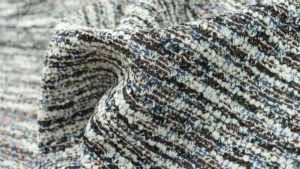
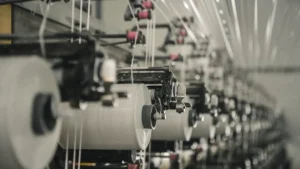
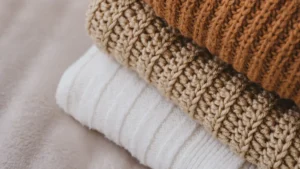

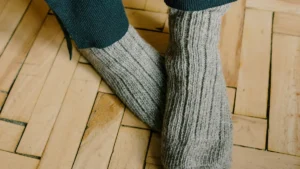


9 thoughts on “Understanding Linen Yarn Options in Knitwear Manufacturing”
Pingback: Top 10 UK Knitwear Manufacturers for Startups and Small Businesses
Pingback: Top Knitwear Manufacturer in France
Pingback: Best Choices for Knitwear Manufacturing in Italy
Pingback: Best Knitwear Manufacturing Companies in Israel for 2025
Pingback: Top 10 Knitwear Manufacturers in Colorado for 2025
Pingback: 10 Top Knitwear Factories in Chicago for 2025
Pingback: Best Places to Find Custom Knitwear Producers in Seattle
Pingback: 10 Best San Jose Custom Knitwear Manufacturers for Your Brand
Pingback: Luxury Fibers: A Comprehensive Guide to Luxury, Eco-Friendly & Budget Fibers for B2B Knitwear Sourcing